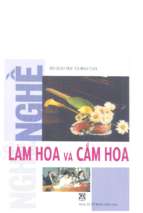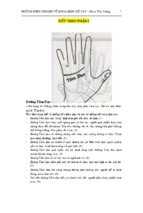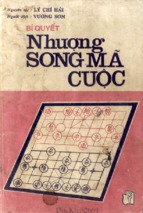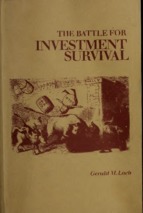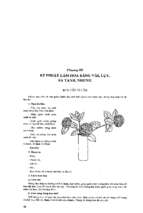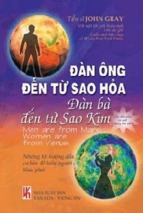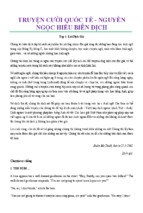THE SELFISH GENE (RICHARD DAWKINS)
THE SELFISH GENE
Richard Dawkins is Charles Simonyi Professor for the Public
Understanding of Science at Oxford University. Born in Nairobi
of British parents, he was educated at Oxford and did his
doctorate under the Nobel-prizewinning ethologist Niko Tinbergen. From 1967 to 1969 he was an Assistant Professor at the
University of California at Berkeley, returning as University
Lecturer and later Reader in /oology at New College, Oxford,
before becoming the first holder of the Simonyi Chair in 1995.
He is a fellow of New College.
The Selfish Gene (1976; second edition 1989) catapulted Richard
Dawkins to fame, and remains his most famous and widely read
work. It was followed by a string of bestselling books: The
Extended Phenolype (1982), The Blind Watchmaker (1986), River
Out of Eden (1995), Climbing Mount Improbable (1996),
Unweaving the Rainbow (1998), and The Ancestor's Tale (2004).
A Devil's Chaplain, a collection of his shorter writings, was
published in 2003. Dawkins is a Fellow of both the Royal Society
and the Royal Society of Literature. He is the recipient of
numerous honours and awards, including the 1987 Royal Society
of Literature Award, the Los Angeles Times Literary Prize of
the same year, the 1990 Michael Faraday Award of the Royal
Society, the 1994 Nakayama Prize, the 1997 International
Cosmos Prize for Achievement in Human Science, the Kistler
Prize in 2001, and the Shakespeare Prize in 2005.
This page intentionally left blank
THE
SELFISH
GENE
RICHARD DAWKINS
OXFORD
UNIVERSITY PRESS
OXFORD
UNIVERSITY PRESS
Great Clarendon Street, Oxford 0x2 6op
Oxford University Press is a department of the University of Oxford.
It furthers the University's objective of excellence in research, scholarship,
and education by publishing worldwide in
Oxford New York
Auckland Cape Town Dar es Salaam Hong Kong Karachi
Kuala Lumpur Madrid Melbourne Mexico City Nairobi
New Delhi Shanghai Taipei Toronto
With offices in
Argentina Austria Brazil Chile Czech Republic France Greece
Guatemala Hungary Italy Japan Poland Portugal Singapore
South Korea Switzerland Thailand Turkey Ukraine Vietnam
Oxford is a registered trade mark of Oxford University Press
in the UK and in certain other countries
Published in the United States
by Oxford University Press Inc., New York
© Richard Dawkins 1989
The moral rights of the author have been asserted
Database right Oxford University Press (maker)
First published 1976
Second edition 1989
30th anniversary edition 2006
All rights reserved. No part of this publication may be reproduced,
stored in a retrieval system, or transmitted, in any form or by any means,
without the prior permission in writing of Oxford University Press,
or as expressly permitted by law, or under terms agreed with the appropriate
reprographics rights organizations. Enquiries concerning reproduction
outside the scope of the above should be sent to the Rights Department,
Oxford University Press, at the address above
You must not circulate this book in any other binding or cover
and you must impose this same condition on any acquirer
British Library Cataloguing in Publication Data
Data available
Library of Congress Cataloging in Publication Data
Data available
ISBN 0-19-929114-4 978-0-19-929114-4
ISBN 0-19-929115-2 (Pbk) 978-0-19-929115-1 (Pbk)
1 3 5 7 9 10 8 6 42
Printed in Great Britain by
Clays Ltd., St Ives pic
CONTENTS
Introduction to 30th anniversary edition
vii
Preface to second edition
xv
Foreword to first edition
xix
Preface to first edition
xxi
1. Why are people? 1
1
2. The replicators
12
3. Immortal coils
21
4. The gene machine
46
5. Aggression: stability and the selfish machine
66
6. Genesmanship
88
7. Family planning
109
8. Battle of the generations
123
9. Battle of the sexes
140
10. You scratch my back, I'll ride on yours
166
11. Memes: the new replicators
189
12. Nice guysfinishfirst2
202
13. The long reach of the gene
234
Endnotes
267
Updated bibliography
333
Index and key to bibliography
345
Extracts from reviews
353
This page intentionally left blank
INTRODUCTION TO THE 30TH
ANNIVERSARY EDITION
It is sobering to realise that I have lived nearly half my life with The
Selfish Gene — for better, for worse. Over the years, as each of my seven
subsequent books has appeared, publishers have sent me on tour to
promote it. Audiences respond to the new book, whichever one it is,
with gratifying enthusiasm, applaud politely and ask intelligent questions. Then they line up to buy, and have me sign . . . The Selfish Gene.
That is a bit of an exaggeration. Some of them do buy the new book
and, for the rest, my wife consoles me by arguing that people who
newly discover an author will naturally tend to go back to his first book:
having read The Selfish Gene, surely they'll work their way through to
the latest and (to its fond parent) favourite baby?
I would mind more if I could claim that The Selfish Gene had become severely outmoded and superseded. Unfortunately (from one
point of view) I cannot. Details have changed and factual examples
burgeoned mightily. But, with an exception that I shall discuss in a
moment, there is little in the book that I would rush to take back now,
or apologise for. Arthur Cain, late Professor of Zoology at Liverpool
and one of my inspiring tutors at Oxford in the sixties, described The
Selfish Gene in 1976 as a 'young man's book'. He was deliberately
quoting a commentator on A. J. Ayer's Language Truth and Logic. I was
flattered by the comparison, although I knew that Ayer had recanted
much of his first book and I could hardly miss Cain's pointed implication that I should, in the fullness of time, do the same.
Let me begin with some second thoughts about the title. In 1975,
through the mediation of my friend Desmond Morris I showed the
partially completed book to Tom Maschler, doyen of London publishers, and we discussed it in his room at Jonathan Cape. He liked the
book but not the title. 'Selfish', he said, was a 'down word'. Why not
call it The Immortal Gene? Immortal was an 'up' word, the immortality of genetic information was a central theme of the book, and
'immortal gene' had almost the same intriguing ring as 'selfish gene'
(neither of us, I think, noticed the resonance with Oscar Wilde's The
Selfish Giant). I now think Maschler may have been right. Many critics, especially vociferous ones learned in philosophy as I have discovered, prefer to read a book by title only. No doubt this works well
viii
Introduction lo the jolh anniversary edition
enough for The Tale of Benjamin Bunny or The Decline and Fall of the
Roman Empire, but I can readily see that 'The Selfish Gene' on its own,
without the large footnote of the book itself, might give an inadequate
impression of its contents. Nowadays, an American publisher would
in any case have insisted on a subtitle.
The best way to explain the title is by locating the emphasis. Emphasize 'selfish' and you will think the book is about selfishness,
whereas, if anything, it devotes more attention to altruism. The correct word of the title to stress is 'gene' and let me explain why. A
central debate within Darwinism concerns the unit that is actually
selected: what kind of entity is it that survives, or does not survive, as
a consequence of natural selection. That unit will become, more or
less by definition, 'selfish'. Altruism might well be favoured at other
levels. Does natural selection choose between species? If so, we might
expect individual organisms to behave altruistically 'for the good of the
species'. They might limit their birth rates to avoid overpopulation,
or restrain their hunting behaviour to conserve the species' future
stocks of prey. It was such widely disseminated misunderstandings of
Darwinism that originally provoked me to write the book.
Or does natural selection, as I urge instead here, choose between
genes? In this case, we should not be surprised to find individual organisms behaving altruistically 'for the good of the genes', for example by feeding and protecting kin who are likely to share copies of the
same genes. Such kin altruism is only one way in which gene selfishness can translate itself into individual altruism. This book explains
how it works, together with reciprocation, Darwinian theory's other
main generator of altruism. If I were ever to rewrite the book, as a late
convert to the Zahavi/Grafen 'handicap principle' (see pages 309-313)
I should also give some space to Amotz Zahavi's idea that altruistic
donation might be a 'Potlatch' style of dominance signal: see how
superior to you I am, I can afford to make a donation to you!
Let me repeat and expand the rationale for the word 'selfish' in the
title. The critical question is which level in the hierarchy of life will
turn out to be the inevitably 'selfish' level, at which natural selection
acts? The Selfish Species? The Selfish Group? The Selfish Organism?
The Selfish Ecosystem? Most of these could be argued, and most have
been uncritically assumed by one or another author, but all of them
are wrong. Given that the Darwinian message is going to be pithily
encapsulated as The Selfish Something, that something turns out to be
the gene, for cogent reasons which this book argues. Whether or not
Introduction to the joth anniversary edition
ix
you end up buying the argument itself, that is the explanation for the
title.
I hope that takes care of the more serious misunderstandings. Nevertheless, I do with hindsight notice lapses of my own on the very same
subject. These are to be found especially in Chapter i, epitomised by
the sentence 'Let us try to teach generosity and altruism because we
are born selfish'. There is nothing wrong with teaching generosity and
altruism, but 'born selfish' is misleading. In partial explanation, it was
not until 1978 that I began to think clearly about the distinction between 'vehicles' (usually organisms) and the 'replicators' that ride
inside them (in practice genes : the whole matter is explained in
Chapter 13, which was added in the Second Edition). Please mentally
delete that rogue sentence and others like it, and substitute something
along the lines of this paragraph.
Given the dangers of that style of error, I can readily see how the
title could be misunderstood, and this is one reason why I should perhaps have gone for The Immortal Gene. The Altruistic Vehicle would
have been another possibility. Perhaps it would have been too enigmatic
but, at all events, the apparent dispute between the gene and the
organism as rival units of natural selection (a dispute that exercised
the late Ernst Mayr to the end) is resolved. There are two kinds of unit
of natural selection, and there is no dispute between them. The gene
is the unit in the sense of replicator. The organism is the unit in the
sense of vehicle. Both are important. Neither should be denigrated.
They represent two completely distinct kinds of unit and we shall be
hopelessly confused unless we recognize the distinction.
Another good alternative to The Selfish Gene would have been The
Cooperative Gene. It sounds paradoxically opposite, but a central part
of the book argues for a form of cooperation among self-interested
genes. This emphatically does not mean that groups of genes prosper
at the expense of their members, or at the expense of other groups.
Rather, each gene is seen as pursuing its own self-interested agenda
against the background of the other genes in the gene pool—the set of
candidates for sexual shuffling within a species. Those other genes are
part of the environment in which each gene survives, in the same way
as the weather, predators and prey, supporting vegetation and soil
bacteria are parts of the environment. From each gene's point of view,
the 'background' genes are those with which it shares bodies in its
journey down the generations. In the short term, that means the other
members of the genome. In the long term, it means the other genes in
x
Introduction to the joth anniversary edition
the gene pool of the species. Natural selection therefore sees to it that
gangs of mutually compatible—which is almost to say cooperating—
genes are favoured in the presence of each other. At no time does this
evolution of the 'cooperative gene' violate the fundamental principle
of the selfish gene. Chapter 5 develops the idea, using the analogy of a
rowing crew, and Chapter 13 takes it further.
Now, given that natural selection for selfish genes tends to favour
cooperation among genes, it has to be admitted that there are some
genes that do no such thing and work against the interests of the rest
of the genome. Some authors have called them outlaw genes, others
ultra-selfish genes, yet others just 'selfish genes'—misunderstanding
the subtle difference from genes that cooperate in self-interested cartels. Examples of ultra-selfish genes are the meiotic drive genes
described on pages 235-237, and the 'parasitic DNA' originally proposed on pages 44-45 and developed further by various authors
under the catchphrase 'Selfish DNA'. The uncovering of new and ever
more bizarre examples of ultra-selfish genes has become a feature of
the years since this book was first published.
The Selfish Gene has been criticized for anthropomorphic personification and this too needs an explanation, if not an apology. I
employ two levels of personification: of genes, and of organisms.
Personification of genes really ought not to be a problem, because
no sane person thinks DNA molecules have conscious personalities,
and no sensible reader would impute such a delusion to an author. I
once had the honour of hearing the great molecular biologist
Jacques Monod talking about creativity in science. I have forgotten
his exact words, but he said approximately that, when trying to
think through a chemical problem, he would ask himself what he
would do if he were an electron. Peter Atkins, in his wonderful book
Creation Revisited, uses a similar personification when considering the
refraction of a light beam, passing into a medium of higher refractive index which slows it down. The beam behaves as if trying to
minimize the time taken to travel to an end point. Atkins imagines it
as a lifeguard on a beach racing to rescue a drowning swimmer.
Should he head straight for the swimmer? No, because he can run
faster than he can swim and would be wise to increase the dry-land
proportion of his travel time. Should he run to a point on the beach
directly opposite his target, thereby minimizing his swimming time?
Better, but still not the best. Calculation (if he had time to do it)
would disclose to the lifeguard an optimum intermediate angle,
Introduction to the joth anniversary edition
xi
yielding the ideal combination of fast running followed by inevitably
slower swimming. Atkins concludes:
That is exactly the behaviour of light passing into a denser medium. But
how does light know, apparently in advance, which is the briefest path?
And, anyway, why should it care?
He develops these questions in a fascinating exposition, inspired by
quantum theory.
Personification of this kind is not just a quaint didactic device. It
can also help a professional scientist to get the right answer, in the face
of tricky temptations to error. Such is the case with Darwinian calculations of altruism and selfishness, cooperation and spite. It is very easy
to get the wrong answer. Personifying genes, if done with due care and
caution, often turns out to be the shortest route to rescuing a Darwinian theorist drowning in muddle. While trying to exercise that caution,
I was encouraged by the masterful precedent of W. D. Hamilton, one
of the four named heroes of the book. In a paper of 1972 (the year in
which I began to write The Selfish Gene) Hamilton wrote:
A gene is being favoured in natural selection if the aggregate of its replicas forms an increasing fraction of the total gene pool. We are going to
be concerned with genes supposed to affect the social behaviour of their
bearers, so let us try to make the argument more vivid by attributing
to the genes, temporarily, intelligence and a certain freedom of choice.
Imagine that a gene is considering the problem of increasing the number of its replicas, and imagine that it can choose between . . .
That is exactly the right spirit in which to read much of The Selfish
Gene.
Personifying an organism could be more problematical. This is because organisms, unlike genes, have brains and therefore really might
have selfish or altruistic motives in something like the subjective sense
we would recognize. A book called The Selfish Lion might actually
confuse, in a way that The Selfish Gene should not. Just as one can put
oneself in the position of an imaginary light beam, intelligently
choosing the optimal route through a cascade of lenses and prisms, or
an imaginary gene choosing an optimal route through the generations,
so one can postulate an individual lioness, calculating an optimal behavioural strategy for the long term future survival of her genes.
Hamilton's first gift to biology was the precise mathematics that a truly
Darwinian individual such as a lion would, in effect, have to employ,
xii
Introduction lo ihe jolh anniversary edition
when taking decisions calculated to maximize the long term survival
of its genes. In this book I used informal verbal equivalents of such
calculations—on the two levels.
On page 130 we switch rapidly from one level to the other:
We have considered the conditions under which it would actually pay a
mother to let a runt die. We might suppose intuitively that the runt
himself should go on struggling to the last, but the theory does not necessarily predict this. As soon as a runt becomes so small and weak that
his expectation of life is reduced to the point where benefit to him due
to parental investment is less than half the benefit that the same investment could potentially confer on the other babies, the runt should die
gracefully and willingly. He can benefit his genes most by doing so.
That is all individual-level introspection. The assumption is not that
the runt chooses what gives him pleasure, or what feels good. Rather,
individuals in a Darwinian world are assumed to be making an as-if
calculation of what would be best for their genes. This particular
paragraph goes on to make it explicit by a quick change to gene-level
personification:
That is to say, a gene that gives the instruction 'Body, if you are very
much smaller than your litter-mates, give up the struggle and die' could
be successful in the gene pool, because it has a 50 per cent chance of
being in the body of each brother and sister saved, and its chances of
surviving in the body of the runt are very small anyway.
And then the paragraph immediately switches back to the introspective runt:
There should be a point of no return in the career of a runt. Before he
reaches this point he should go on struggling. As soon as he reaches it
he should give up and preferably let himself be eaten by his litter-mates
or his parents.
I really believe that these two levels of personification are not confusing if read in context and in full. The two levels of 'as if calculation'
come to exactly the same conclusion if done correctly: that, indeed, is
the criterion for judging their correctness. So, I don't think personification is something I would undo if I were to write the book again
today.
Unwriting a book is one thing. Unreading it is something else. What
are we to make of the following verdict, from a reader in Australia?
Introduction to the joth anniversary edition
xiii
Fascinating, but at times I wish I could unread i t . . . On one level, I can
share in the sense of wonder Dawkins so evidently sees in the workingsout of such complex processes . . . But at the same time, I largely blame
The Selfish Gene for a series of bouts of depression I suffered from for
more than a decade . . . Never sure of my spiritual outlook on life, but
trying to find something deeper—trying to believe, but not quite being
able to—I found that this book just about blew away any vague ideas I
had along these lines, and prevented them from coalescing any further.
This created quite a strong personal crisis for me some years ago.
I have previously described a pair of similar responses from readers:
A foreign publisher of my first book confessed that he could not sleep
for three nights after reading it, so troubled was he by what he saw as its
cold, bleak message. Others have asked me how I can bear to get up in
the mornings. A teacher from a distant country wrote to me reproachfully that a pupil had come to him in tears after reading the same book,
because it had persuaded her that life was empty and purposeless. He
advised her not to show the book to any of her friends, for fear of contaminating them with the same nihilistic pessimism (Unweaving the
Rainbow).
If something is true, no amount of wishful thinking can undo it. That
is the first thing to say, but the second is almost as important. As I went
on to write,
Presumably there is indeed no purpose in the ultimate fate of the cosmos, but do any of us really tic our life's hopes to the ultimate fate of
the cosmos anyway? Of course we don't; not if we are sane. Our lives are
ruled by all sorts of closer, warmer, human ambitions and perceptions.
To accuse science of robbing life of the warmth that makes it worth living is so preposterously mistaken, so diametrically opposite to my own
feelings and those of most working scientists, I am almost driven to the
despair of which I am wrongly suspected.
A similar tendency to shoot the messenger is displayed by other critics who have objected to what the)r see as the disagreeable social,
political or economic implications of The Selfish Gene. Soon after Mrs
Thatcher won her first election victory in 1979, my friend Steven Rose
wrote the following in New Scientist:
I am not implying that Saatchi and Saatchi engaged a team of sociobiologists to write the Thatcher scripts, nor even that certain Oxford and
xiv
Introduction to the joth anniversary edition
Sussex dons are beginning to rejoice at this practical expression of the
simple truths of selfish genery they have been struggling to convey to
us. The coincidence of fashionable theory with political events is messier than that. I do believe though, that when the history of the move to
the right of the late 19708 comes to be written, from law and order to
monetarism and to the (more contradictory) attack on statism, then the
switch in scientific fashion, if only from group to kin selection models
in evolutionary theory, will come to be seen as part of the tide which has
rolled the Thatcherites and their concept of a fixed, igth century competitive and xenophobic human nature into power.
The 'Sussex don' was the late John Maynard Smith, admired by Steven
Rose and me alike, and he replied characteristically in a letter to New
Scientist: 'What should we have done, fiddled the equations?' One of
the dominant messages of The Selfish Gene (reinforced by the title
essay of A Devil's Chaplain) is that we should not derive our values
from Darwinism, unless it is with a negative sign. Our brains have
evolved to the point where we are capable of rebelling against our
selfish genes. The fact that we can do so is made obvious by our use of
contraceptives. The same principle can and should work on a wider
scale.
Unlike the Second Edition of 1989, this Anniversary Edition adds
no new material except this Introduction, and some extracts from reviews chosen by my three-times Editor and champion, Latha Menon.
Nobody but Latha could have filled the shoes of Michael Rodgers,
K-selected Editor Extraordinary, whose indomitable belief in this book
was the booster rocket of its first edition's trajectory.
This edition does, however—and it is a source of particular joy to
me—restore the original Foreword by Robert Trivers. I have mentioned Bill Hamilton as one of the four intellectual heroes of the book.
Bob Trivers is another. His ideas dominate large parts of Chapters 9,
10 and 12, and the whole of Chapter 8. Not only is his Foreword a
beautifully crafted introduction to the book: unusually, he chose the
medium to announce to the world a brilliant new idea, his theory of
the evolution of self-deception. I am most grateful to him for giving
permission for the original Foreword to grace this Anniversary
Edition.
RICHARD DAWKINS
Oxford, October 2005
PREFACE TO SECOND EDITION
IN the dozen years since The Selfish Gene was published its central
message has become textbook orthodoxy. This is paradoxical, but
not in the obvious way. It is not one of those books that was reviled as
revolutionary when published, then steadily won converts until it
ended up so orthodox that we now wonder what the fuss was about.
Quite the contrary. From the outset the reviews were gratifyingly
favourable and it was not seen, initially, as a controversial book. Its
reputation for contentiousness took years to grow until, by now, it is
widely regarded as a work of radical extremism. But over the very
same years as the book's reputation for extremism has escalated, its
actual content has seemed less and less extreme, more and more the
common currency.
The selfish gene theory is Darwin's theory, expressed in a way that
Darwin did not choose but whose aptness, I should like to think, he
would instantly have recognized and delighted in. It is in fact a logical
outgrowth of orthodox neo-Darwinism, but expressed as a novel
image. Rather than focus on the individual organism, it takes a
gene's-eye view of nature. It is a different way of seeing, not a
different theory. In the opening pages of The Extended Phenotype I
explained this using the metaphor of the Necker cube.
This is a two-dimensional pattern of ink on paper, but it is perceived
as a transparent, three-dimensional cube. Stare at it for a few
seconds and it will change to face in a different direction. Carry on
staring and it will flip back to the original cube. Both cubes are
equally compatible with the two-dimensional data on the retina, so
the brain happily alternates between them. Neither is more correct
than the other. My point was that there are two ways of looking at
xvi
Preface to second edition
natural selection, the gene's angle and that of the individual. If
properly understood they are equivalent; two views of the same truth.
You can flip from one to the other and it will still be the same
nee-Darwinism.
I now think that this metaphor was too cautious. Rather than
propose a new theory or unearth a new fact, often the most important
contribution a scientist can make is to discover a new way of seeing
old theories or facts. The Necker cube model is misleading because
it suggests that the twexways of seeing are equally good. To be sure,
the metaphor gets it partly right: 'angles', unlike theories, cannot be
judged by experiment; we cannot resort to our familiar criteria of
verification and falsification. But a change of vision can, at its best,
achieve something loftier than a theory. It can usher in a whole
climate of thinking, in which many exciting and testable theories are
born, and unimagined facts laid bare. The Necker cube metaphor
misses this completely. It captures the idea of a flip in vision, but fails
to do justice to its value. What we are talking about is not a flip to an
equivalent view but, in extreme cases, a transfiguration.
I hasten to disclaim any such status for my own modest contributions. Nevertheless, it is for this kind of reason that I prefer not to
make a clear separation between science and its 'popularization'.
Expounding ideas that have hitherto appeared only in the technical
literature is a difficult art. It requires insightful new twists of
language and revealing metaphors. If you push novelty of language
and metaphor far enough, you can end up with a new way of seeing.
And a new way of seeing, as I have just argued, can in its own right
make an original contribution to science. Einstein himself was no
mean popularizer, and I've often suspected that his vivid metaphors
did more than just help the rest of us. Didn't they also fuel his
creative genius?
The gene's-eye view of Darwinism is implicit in the writings of
R. A. Fisher and the other great pioneers of neo-Darwinism in the
early thirties, but was made explicit by W. D. Hamilton and G. C.
Williams in the sixties. For me their insight had a visionary quality.
But I found their expressions of it too laconic, not full-throated
enough. I was convinced that an amplified and developed version
could make everything about life fall into place, in the heart as well as
in the brain. I would write a book extolling the gene's-eye view of
evolution. It should concentrate its examples on social behaviour, to
help correct the unconscious group-selectionism that then pervaded
Preface to second edition
xvii
popular Darwinism. I began the book in 1972 when power-cuts
resulting from industrial strife interrupted my laboratory research.
The blackouts unfortunately (from one point of view) ended after a
mere two chapters, and I shelved the project until I had a sabbatical
leave in 1975. Meanwhile the theory had been extended, notably by
John Maynard Smith and Robert Trivers. I now see that it was one of
those mysterious periods in which new ideas are hovering in the air. I
wrote The Selfish Gene in something resembling a fever of
excitement.
When Oxford University Press approached me for a second
edition they insisted that a conventional, comprehensive, page by
page revision was inappropriate. There are some books that, from
their conception, are obviously destined for a string of editions, and
The Selfish Gene was not one of them. The first edition borrowed a
youthful quality from the times in which it was written. There was a
whiffof revolution abroad, a streak of Wordsworth's blissful dawn. A
pity to change a child of those times, fatten it with new facts or
wrinkle it with complications and cautions. So, the original text
should stand, warts, sexist pronouns and all. Notes at the end would
cover corrections, responses and developments. And there should
be entirely new chapters, on subjects whose novelty in their own time
would carry forward the mood of revolutionary dawn. The result was
Chapters 12 and 13. For these I took my inspiration from the two
books in the field that have most excited me during the intervening
years: Robert Axelrod's The Evolution of Cooperation, because it
seems to offer some sort of hope for our future; and my own The
ExtendedPhenotypebecause for me it dominated those years and
because—for what that is worth—it is probably the finest thing I
shall ever write.
The tide 'Nice guys finish first' is borrowed from the BBC
Horizon television programme that I presented in 1985. This was a
fifty-minute documentary on game-theoretic approaches to the
evolution of cooperation, produced by Jeremy Taylor. The making
of this film, and another, The Blind Watchmaker, by the same
producer, gave me a new respect for his profession. At their best,
Horizon producers (some of their programmes can be seen in
America, often repackaged under the name Nova) turn themselves
into advanced scholarly experts on the subject in hand. Chapter 12
owes more than just its tide to my experience of working closely with
Jeremy Taylor and the Horizon team, and I am grateful.
xviii
Preface to second edition
I recently learned a disagreeable fact: there are influential scientists in the habit of putting their names to publications in whose
composition they have played no part. Apparently some senior
scientists claim joint authorship of a paper when all that they have
contributed is bench space, grant money and an editorial readthrough of the manuscript. For all I know, entire scientific reputations may have been built on the work of students and colleagues! I
don't know what can be done to combat this dishonesty. Perhaps
journal editors should require signed testimony of what each author
contributed. But that is by the way. My reason for raising the matter
here is to make a contrast. Helena Cronin has done so much to
improve every line—every word—that she should, but for her
adamant refusal, be named as joint author of all the new portions of
this book. I am deeply grateful to her, and sorry that my acknowledgment must be limited to this. I also thank Mark Ridley, Marian
Dawkins and Alan Grafen for advice and for constructive criticism of
particular sections. Thomas Webster, Hilary McGlynn and others at
Oxford University Press cheerfully tolerated my whims and
procrastinations.
RICHARD DAWKINS
1989
FOREWORD TO THE
FIRST EDITION
The chimpanzee and the human share about 99.5 per cent of their
evolutionary history, yet most human thinkers regard the chimp as a
malformed, irrelevant oddity while seeing themselves as steppingstones to the Almighty. To an evolutionist this cannot be so. There
exists no objective basis on which to elevate one species above another.
Chimp and human, lizard and fungus, we have all evolved over some
three billion years by a process known as natural selection. Within each
species some individuals leave more surviving offspring than others,
so that the inheritable traits (genes) of the reproductively successful
become more numerous in the next generation. This is natural selection: the non-random differential reproduction of genes. Natural
selection has built us, and it is natural selection we must understand if
we are to comprehend our own identities.
Although Darwin's theory of evolution through natural selection is
central to the study of social behavior (especially when wedded to
Mendel's genetics), it has been very widely neglected. Whole industries have grown up in the social sciences dedicated to the construction of a pre-Darwinian and pre-Mendelian view of the social and
psychological world. Even within biology the neglect and misuse of
Darwinian theory has been astonishing. Whatever the reasons for this
strange development, there is evidence that it is coming to an end. The
great work of Darwin and Mendel has been extended by a growing
number of workers, most notably by R. A. Fisher, W D. Hamilton,
G. C. Williams, and J. Maynard Smith. Now, for the first time,
this important body of social theory based on natural selection is
presented in a simple and popular form by Richard Dawkins.
One by one Dawkins takes up the major themes of the new work in
social theory: the concepts of altruistic and selfish behavior, the
genetical definition of self-interest, the evolution of aggressive behavior, kinship theory (including parent-offspring relations and the
evolution of the social insects), sex ratio theory, reciprocal altruism,
deceit, and the natural selection of sex differences. With a confidence
that comes from mastering the underlying theory, Dawkins unfolds the
new work with admirable clarity and style. Broadly educated in biology, he gives the reader a taste of its rich and fascinating literature.
- Xem thêm -


